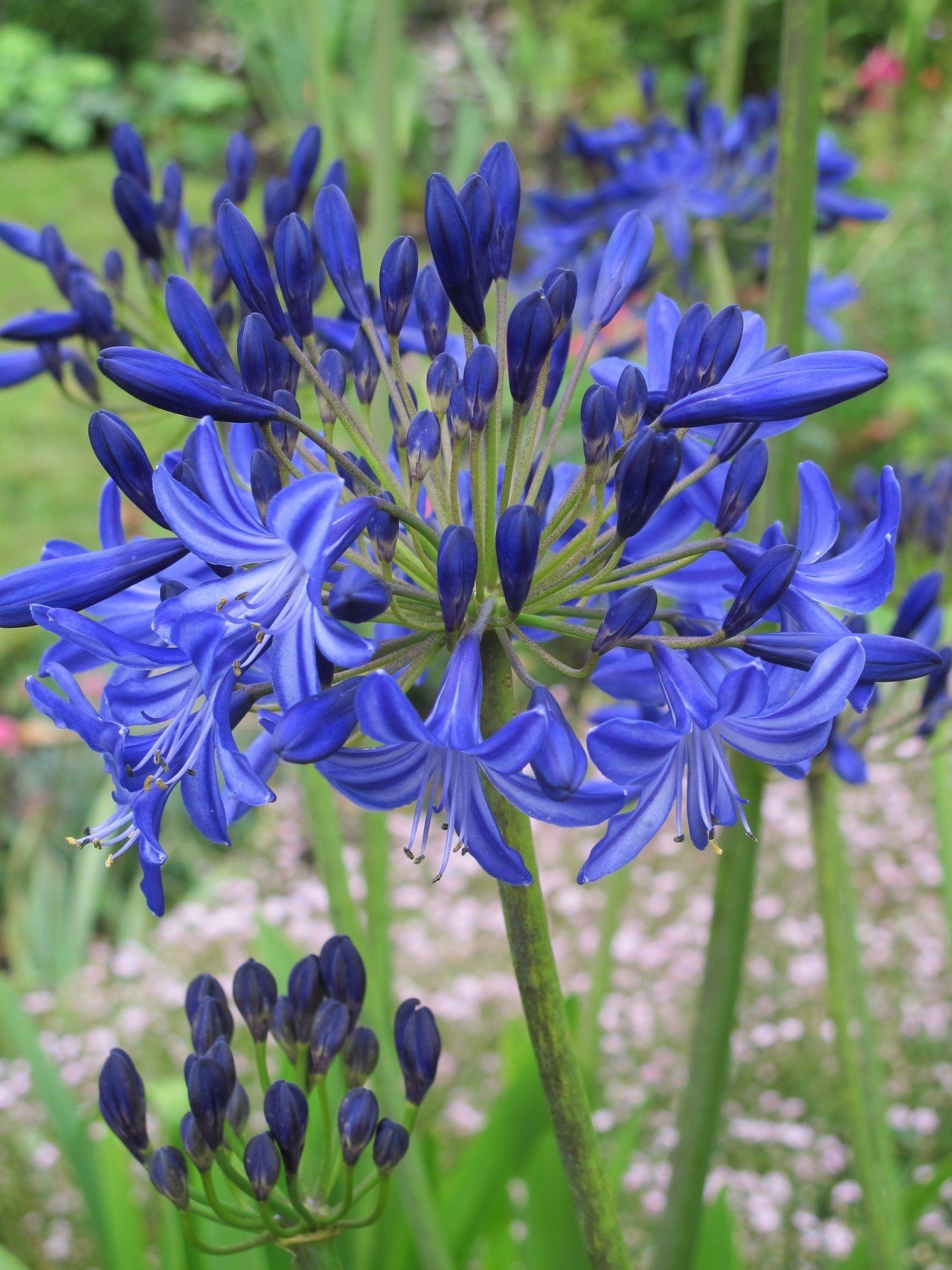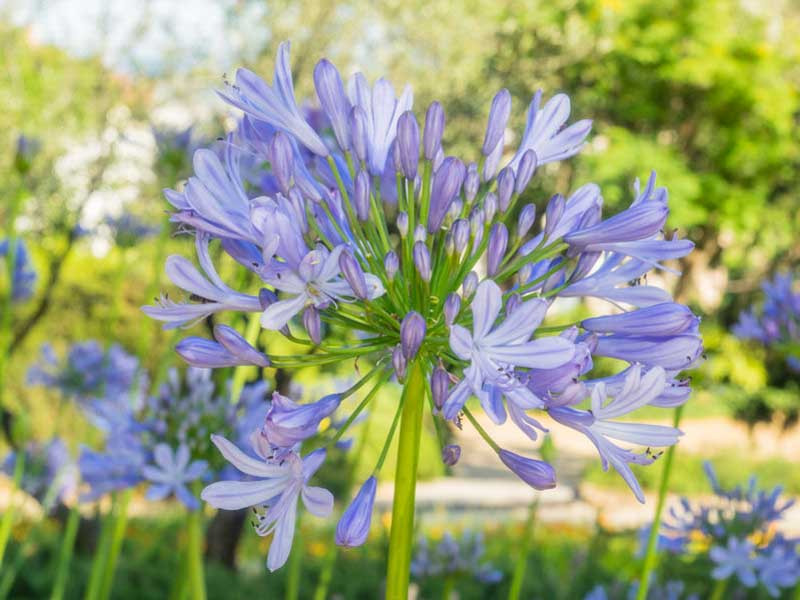Unleashing the Secret to Effective Agapanthus Growing: Tips and Tricks for a Flourishing Yard
In the world of gardening, growing agapanthus successfully needs a strategic strategy that includes various elements of plant care. With mindful interest to information, one can unlock the tricks to supporting these spectacular blossoms, causing a garden that grows with beauty and vibrancy. By recognizing the nuances of agapanthus growing, one can create an atmosphere where these plants prosper and bloom perfectly. In the following conversation, we will explore crucial suggestions and methods that will certainly direct you in the direction of a flourishing agapanthus yard, using understandings into ideal practices, soil problems, sprinkling techniques, and extra.
Planting Agapanthus: Finest Practices
When growing Agapanthus, correct dirt prep work is important for making certain successful growth and development of these stunning blossoms. Agapanthus, generally referred to as Lily of the Nile or African lily, thrives in well-draining dirt with a somewhat acidic to neutral pH degree - Agapanthus. Before planting, it is essential to change heavy clay dirts with natural issue such as compost or peat moss to enhance drain and supply necessary nutrients for the plants
To grow Agapanthus, select a place that gets complete sunshine to partial shade, as this will promote healthy development and plentiful flowering. Dig a hole twice the diameter of the plant's origin round and position the Agapanthus at the very same depth it was previously growing. Delicately backfill the hole with soil, pressing down firmly to get rid of any air pockets around the roots.
Water the recently planted Agapanthus completely and remain to keep the dirt uniformly wet, particularly during the plant's active growing period. Agapanthus. Using a balanced fertilizer once a month can further support the plant's development and blooming. By adhering to these finest practices for growing Agapanthus, you can develop a stunning screen of these exciting blossoms in your yard
Suitable Soil Issues for Agapanthus
For optimum development and growing success of Agapanthus plants, ensuring the soil conditions are perfect is crucial. Agapanthus grows in well-draining dirt with a somewhat acidic to neutral pH degree ranging from 6.0 to 7.0. This kind of dirt enables adequate water drain, stopping waterlogging which can result in root rot. To enhance dirt water drainage, think about including organic matter such as compost or peat moss when preparing the planting website. Moreover, Agapanthus favors dirt that is abundant in nutrients, so incorporating a well balanced plant food during the expanding season can advertise healthy development and dynamic blooms.

Watering and Fertilizing Tips
To make certain healthy and balanced growth and vivid flowers, proper watering and feeding strategies are crucial for effective Agapanthus farming. Agapanthus plants benefit from normal watering, especially throughout the expanding season.
When it comes to feeding Agapanthus, a balanced plant food with equal parts nitrogen, phosphorus, and potassium can be used in the spring to advertise healthy development and blooming. Slow-release fertilizers are suitable for offering nutrients slowly over an extended duration. Prevent over-fertilizing, as this can result in too much vegetation development at the cost of blossoms.
Additionally, including raw material like compost right into the soil can boost nutrient levels and enhance soil structure, assisting in the total health and wellness of the Agapanthus plants. By following these watering and feeding tips, gardeners can ensure their Agapanthus plants prosper and produce sensational screens of blossoms.
Pruning and Deadheading Strategies
Correct pruning and deadheading strategies play an essential duty in maintaining the health and visual appeals of Agapanthus plants, enhancing the essential methods of watering and fertilizing for effective farming. Pruning Agapanthus includes eliminating spent blossom heads, dead see this website or yellowing leaves, and total shaping of the plant to promote much better development. Deadheading, the procedure of eliminating faded flowers, not only enhances the plant's appearance however additionally encourages additional growing.
When deadheading Agapanthus, it is recommended to clip off the blossom stem at the base utilizing sharp, clean shears. This process reroutes the plant's energy from seed production back right into origin and foliage development, advertising a healthier and more robust plant. Regular deadheading can prolong the flowering period of Agapanthus and stop self-seeding, which can bring about overcrowding.
In terms of pruning, Agapanthus normally advantages from a light trim after blossoming to clean the plant and urge fresh growth. Cutting down the spent flower stems and removing any type of dead or broken vegetation aids keep the plant's vitality and overall look. Nevertheless, it is crucial to prevent reducing into the crown of the plant, as this can damage its health.

Protecting Agapanthus From Vermins and Diseases
Executing reliable bug and illness management methods is critical to safeguarding the health and wellness and vitality of Agapanthus plants in farming. One common insect that influences Agapanthus is the Agapanthus borer, a caterpillar that tunnels right into the plant, triggering damage to the blossoms and leaves.
In addition to bugs, Agapanthus are vulnerable to conditions such as origin rot and fungal fallen leave spots. By staying watchful and attending to parasite and disease concerns immediately, gardeners can assist their Agapanthus prosper and thrive.

Final Thought
To conclude, successful growing of agapanthus requires correct planting strategies, optimal soil conditions, adequate watering and fertilizing, routine pruning and deadheading, Agapanthus and security from conditions and pests. By complying with these techniques and pointers, gardeners can ensure a growing yard full of gorgeous agapanthus blooms. Agapanthus. Remember to maintain consistent care and attention to information to advertise the wellness and long life of these sensational plants
When planting Agapanthus, correct dirt preparation is essential for making sure successful growth and growth of these lovely blossoms.Water the newly planted Agapanthus thoroughly and proceed to keep the dirt evenly moist, especially throughout the plant's energetic expanding season.For optimal development and blooming success of Agapanthus plants, making sure the dirt problems are excellent is crucial. When planting or hair transplanting Agapanthus, make sure the dirt is well-prepared to supply the essential structure index for the plants to develop themselves efficiently. One typical parasite that affects Agapanthus is the Agapanthus borer, a caterpillar that tunnels right into the plant, causing damages to the blossoms and fallen leaves.